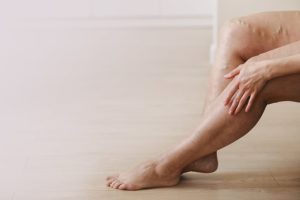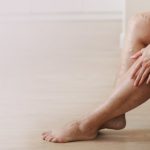 Never ignore varicose veins for two reasons:
Never ignore varicose veins for two reasons:
- They are not a cosmetic issue alone.
- They will get worse, if not treated, over time.
Varicose veins effect an estimated 40 million people just in the USA. Upwards from 50% of the population over the age of fifty currently have them.
This does not mean that varicose veins are inevitable and that you should simply give up and accept them as a normal part of aging. Varicose veins are caused by venous insufficiency aka vein disease. It is a disease.
By being aware of potential risk factors that might predispose you to such a condition, you can take action to prevent varicose veins from occurring, or at the very least greatly prolong their initial occurrence.
Risk Factors May Encompass Any or All of the Following:
- Age – Although varicose veins can occur at any age, even in teens and pre-teens, they are much more common in the elderly. Once reaching the age of fifty, a person’s risk for developing varicose veins increases greatly.
- Weight – Being overweight can lead to the development of varicose veins, especially if an unhealthy diet is present at the same time. Not only does being overweight tend to contribute towards a more sedentary lifestyle, but like with pregnancy, the additional weight creates pressure on the veins of the lower extremities, veins which in turn must work harder against the force of gravity when pumping blood back upwards towards the heart.
- Activity Level – Staying active and getting frequent exercise is crucial for those who want to prevent varicose veins. An inactive lifestyle can promote the pooling of blood in leg veins and adds pressure to the lower extremities during periods of rest, impairing circulation and preventing important muscle growth from occurring in the calves
- Sex – While both men and women can have varicose veins, certain factors lead them to be more common in women. Pregnancy and hormonal changes are the culprit for these differences, as both the additional weight of carrying a baby can add pressure to the lower extremities while the presence of additional estrogen in the body leads to an increased risk for blood clots.
- Genetics – If you have a history of varicose veins in your family, then there is a fairly good chance that you will be afflicted by them as well at some point in your life. In fact, if both of your parents have had varicose veins, then your chance of developing them yourself is considered to be as high as 90%.
- Trauma to an area – Even in a person who is perfectly healthy and active, physical injury to one or both of the legs can result in varicose veins if the blood vessels beneath the skin are damaged. While these traumas are most likely unpredicted and unpreventable, they can be an indication that varicose veins may be eminent.
- Profession – Those whose professions require them to sit or stand for prolonged periods of time will be more likely to develop varicose veins. The same can be said for those who are frequent travelers, as sitting in the same position in a car or on a plane for extended periods can make it difficult to adjust posture and take breaks to walk around.
If you are concerned that you may have varicose veins or venous insufficiency and would like to schedule a vein screening at a Tampa vein center, contact the specialists at Tampa Cardiovascular Associates to schedule an appointment today by calling (813) 975-2800. WWW.TAMPACARDIO.COM
